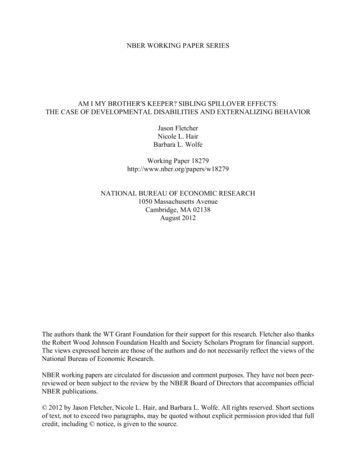Hand Drill/ Tool Risk Assessment/ Introduction/ Use/ Maintenance Palm Drill
Tool Risk Assessment/ Introduction/ Use/ Maintenance Location of use: Hand Drill/ Palm Drill TOOL RISK ASSESSMENT Name of suitably qualified leaders able to teach tools: Date written: Reviewed: Next Review: OUTDOOR LEARNING ACTIVITY SPECIFIC RISK ASSESSMENT: HAND/ PALM DRILLS Any leader using tools in their session should be suitably qualified, experienced and insured to do so. Before any tool is used for the first time with a group, a ‘tool introduction’ must take place. This will inform children and other adults the parts of the tools and how to stand, walk, carry, pass, store and use the tool safely and effectively. The Outdoor Leader should supervise all tool use. Tools are to be stored in lockable tool box. Please also see the ‘tool introduction’ ‘tool use’ and ‘tool maintenance’ information below. Risk Benefit Analysis of Using the Hand/ Palm Drills: The aims of using tools in Outdoor Learning include teaching children about potential risks in our daily lives and how we can manage them. Therefore, Outdoor Learning does contain an element of risk, however the level of risks the children are exposed to are controlled and at a manageable level so that benefits achieved from participating in Outdoor Learning outweigh the levels of risk. Potential hazards & control measures are detailed in the table that follows. Specific benefits from using the Hand/ palm Drills: Emotional intelligence; self-esteem; confidence; resilience; teamwork; child-differentiated learning; holistic development; empathy; sense of selfworth; communication skills; logical thinking; problem solving; practical extensions of classroom objectives; curriculum enrichment; connect with nature; promote eco-friendly attitudes; higher order thinking skills; child-specific learning; extension of skills and knowledge; improved behaviour; de-stress; increased motivation to learn; learning above and beyond the national curriculum; cross curricular learning; imagination; creativity; physical development; core strength; emotional literacy; physical literacy; independence; self-awareness and management of risk. Please note: This Risk Assessment is a guidance document and should be adapted to suit your own Outdoor Learning environment. 1
Tool Risk Assessment/ Introduction/ Use/ Maintenance Hand Drill/ Palm Drill TOOL RISK ASSESSMENT Hazard Harm People at risk Probability Severit y rating Measures. (new or existing) Mis-use/ failing to follow the ‘tool talk’ various all 1 3 3 Tools are kept in a lockable toolbox when not in use. All The other adults will supervise all other activities whilst the Outdoor Leader supervises tool use. Children will be called in pairs to demonstrate good practise. Once good practise has been displayed by all, a maximum of three tools may be used at any one time. This will involve 6 children as they are used in pairsone child drilling/ one child holding. Injury to others not involved in drilling various Other children & adults 1 3 3 A designated ‘tool area’ is used away from other All activities. Other children not involved are to stay out of the tool area. The drill must be used a tool and 2 arm’s length away from anyone else. Injury during transportation Various cuts Group and leaders 2 2 4 All drills kept in tool box when not being used. Ensure group have full understanding of parts of drill, and how to stand, walk, pass, carry, use and store it. Please note: This Risk Assessment is a guidance document and should be adapted to suit your own Outdoor Learning environment. Who is responsible? Outdoor leader 2
Tool Risk Assessment/ Introduction/ Use/ Maintenance Hazard Harm Hand Drill/ Palm Drill TOOL RISK ASSESSMENT People at risk Probability Severit y rating Measures. (new or existing) Drill slipping Various cuts Group & leaders when being used 3 3 9 Ensure the drill bit is sharp and useable and the Outdoor handle is in good condition. leader Ensure group have full understanding how to position tool & use. Helper to wear glove(s) on helping hand(s). Drill bit snapping Various cuts Group & leaders 1 3 3 Regular and effective maintenance of tool, both of the drill bit and the drill. Glove(s) on the helping hand(s) of the child holding the wood. Group informed how to check drill bit. Leader checks tools regularly & decommissions tools when necessary. Ensure using correct size drill bit for hardness of wood. Outdoor leader Drill cutting hand Various cuts Group & leaders 2 2 4 Correct positioning of drill when in use. Gloves to be worn on helping hands of the person holding the wood. Outdoor Leader Please note: This Risk Assessment is a guidance document and should be adapted to suit your own Outdoor Learning environment. Who is responsible? 3
Tool Risk Assessment/ Introduction/ Use/ Maintenance Hand Drill/ Palm Drill TOOL RISK ASSESSMENT Tool Introduction for hand/ palm drill Photo: OLME Ltd Photo: OLME Ltd No gloves on person using the tool Glove on helping hand(s) of the other person holding the wood This is a hand/ palm drill This is the handle, this is the drill bit This is the drilling end I hold the hand/ palm drill like this (Hold handle with drill bit facing down) I walk with the hand/ palm drill like this (Hold handle & hold drill to the side with drill bit facing downwards) I pass the hand/ palm drill like this (Hold the bottom of the handle near the drill bit and pass so the other person can take the top part of the handle) When I am not using the hand/ palm drill I put it down with the handle facing forward and drill bit facing backwards like this I use the drill to drill a hole in wood When I use the hand/ palm drill I use it 2 arms and a tool away from anyone else like this When I have finished using the hand/ palm drill I place it in the designated place or toolbox provided Please note: This Risk Assessment is a guidance document and should be adapted to suit your own Outdoor Learning environment. 4
Tool Risk Assessment/ Introduction/ Use/ Maintenance Hand Drill/ Palm Drill TOOL RISK ASSESSMENT Tool Use The hand/ palm drill should be used in pairs. The helper should hold the wood with gloved hand(s) on a flat surface, such as wood. This ensures that the drill bit is not damaged when it cuts through. The driller should identify the spot on the wood to be drilled. If using the hand drill, the driller should then hold the drill vertical and turn the handle forwards so that the drill bit spins on a straight vertical axis. The driller should reverse the rotation if the drill bit should become stuck and may need to blow some dust away from the hole, ensuring both people have turned away so as not to get dust in their eyes. They should both be careful not to touch the drill bit immediately after drilling as it may become hot. If using the palm drill, the driller should lean weight onto the drill and turn it in a clockwise direction by the handle. Once the hole has been drilled, they should turn it anti-clockwise whilst pulling it out carefully. Tool Maintenance The tool should be cleaned with a cloth and oil and checked after each session. The drill may be blown on to clear any dust. If the drill bit is deemed unsafe, then it should be changed. The drill should be stored in a waterproof/ airtight container. Please note: This Risk Assessment is a guidance document and should be adapted to suit your own Outdoor Learning environment. 5
Drill bit snapping Various cuts Group & leaders 1 3 3 Regular and effective maintenance of tool, both of the drill bit and the drill. Glove(s) on the helping hand(s) of the child holding the wood. Group informed how to check drill bit. Leader checks tools regularly & decommissions tools when necessary.
Basketball Drills Greenvale Basketball Club Inc. (A0025777N) Drill 01 - Bull In The Ring Drill 02 - Bump The Cutter Drill 03 - Chill Drill Drill 04 - Close Out Drill Drill 05 - Defensive Shuffle And Pass Drill 06 - Fifty Passes Drill 07 - Five Corner Passing Drill 08 - Five On Four Plus One Drill 09 - Four On Four Recover
Drills 1. Proper Grip 16. Step Over Shuffle w/Bags Drill 2. Warm Up Progression 17. Pocket Awareness Drill 3. Proper Throwing Motion 18. Pocket Awareness w/Ball Drill 4. 5 & 7 Step Drop Drill 19. Rapid Fire Drill 5. Step Over Drill 20. Rout Tree 6. Jump & Throw 7. Kneel & Throw Drill 8. Step Over Throw & Drill 9.
Can be used to insert all Blum press-in hinges Part no. Knock-in tool ZME.0710 Machine drill bits Part no. Ø5 mm drill bit (RH) M01.ZB05.D2 R Ø5 mm drill bit (LH) M01.ZB05.D3 L Ø8 mm drill bit (LH) M01.ZB08.03 L Ø10 mm drill bit (RH) M01.ZB10.02 R Ø10 mm drill bit (LH) M01.ZB10.03 L Ø20 mm drill bit (RH) M01.ZB20.02 R Ø35 mm drill bit .
Defensive Line Drill Library Drills 1. Alignment Assessment Drill 19. Two Man Sled Drill With Pass React 2. Common Errors 20. Two Man Sled Shiver With Run React Drill 3. Defensive Line Tips 21. DL Ladder 1 Foot Drill 4. 9 Ways to Force Fumbles 22. DL Ladder HK Drill 5. Pass Rush Moves (5-7-8) 23. DL Ladder HK Shuffle Drill 9.
yr00891 unitec hand held core drill (wet) cap 3” concrete yr00892 husqvarna hand held core drill wet/dry hd6/dm220/225/230 yr00894 husqvarna hand held core drill wet/dry dm220 w/port for vac hookup yr00895 diamond products hand held core drill (wet) dk12 - 6” cap . yr00896 diamond products hand held core drill wet/dry cb500-hh
2ZDF -KCD L47 Solid Drill (Diamond Coated) 2ZDK L62 Flat Bottom Drill 2ZDK HP-1.5D L50,L51 Flat Bottom Drill 2ZDK HP-1.5D-LS L52,L53 Flat Bottom Drill 2ZDK HP-3D L54,L55 Flat Bottom Drill 2ZDK HP-3D-OH L56,L57 Flat Bottom Drill 2ZDK S L60,L61 Flat Bottom Drill 2ZDK S-P L60 Flat Bottom Drill
2 FIVB Sports Development Department Beach Volleyball Drill-book TABLE OF CONTENTS 22 WARM-UP DRILLS LEVEL PAGES DRILL 1.1 VOLESTE (beginner) 10 DRILL 1.2 SINGLE TWO BALL JUGGLE (beginner) 11 DRILL 1.3 TWO BALL JUGGLE IN PAIRS (beginner) 12 DRILL 1.4 THROW PASS AND CATCH (beginner) 13 DRILL 1.5 SKYBALL AND CATCH (beginner) 14 DRILL 1.6 SERVE AND JOG (beginner) 15
Am I my Brother’s Keeper? Sibling Spillover E ects: The Case of Developmental Disabilities and Externalizing Behavior Jason Fletcher, Nicole Hair, and Barbara Wolfe July 27, 2012 Abstract Using a sample of sibling pairs from the PSID-CDS, we examine the e ects of sibling health status on early educational outcomes. We nd that sibling developmental dis- ability and externalizing behavior are .























